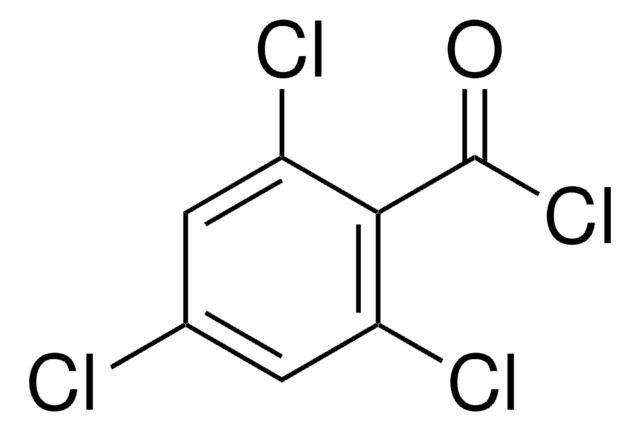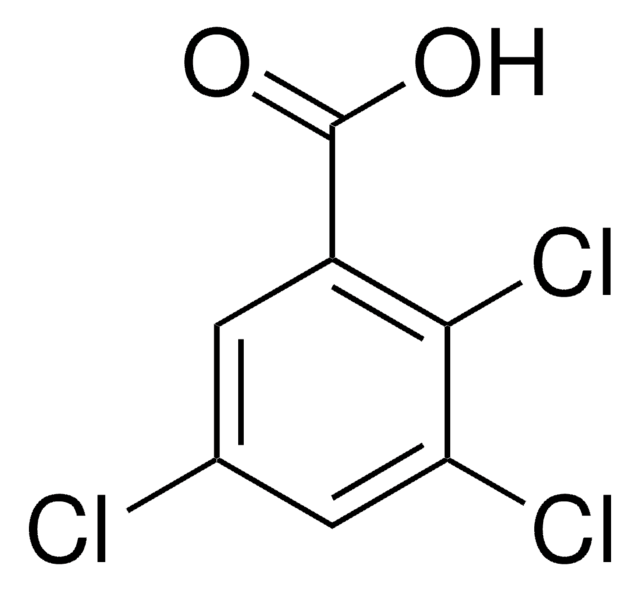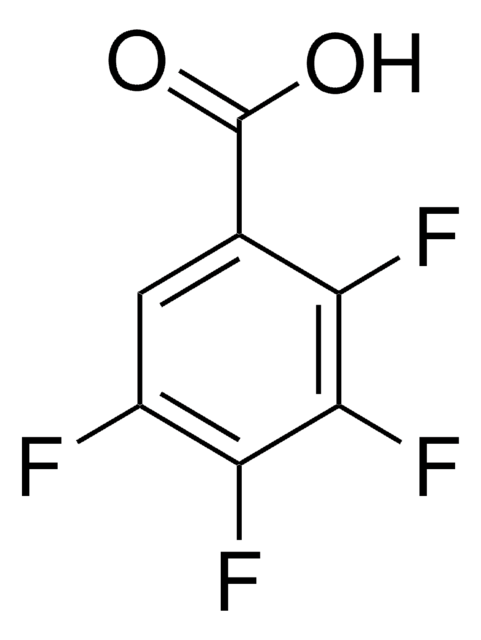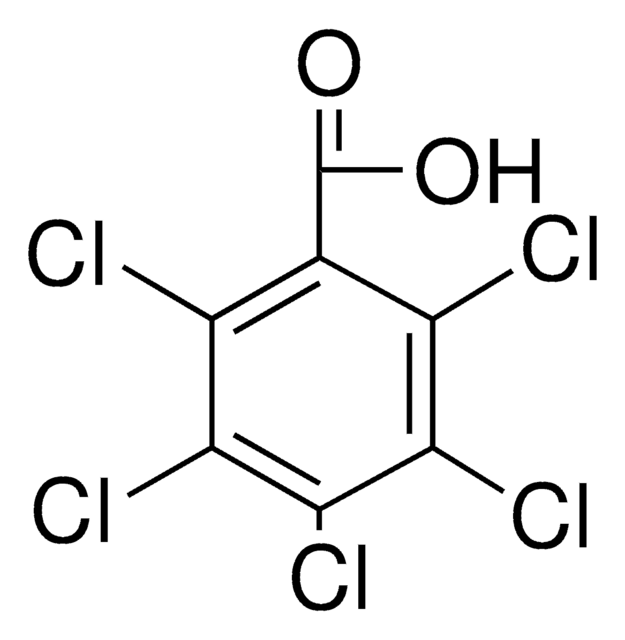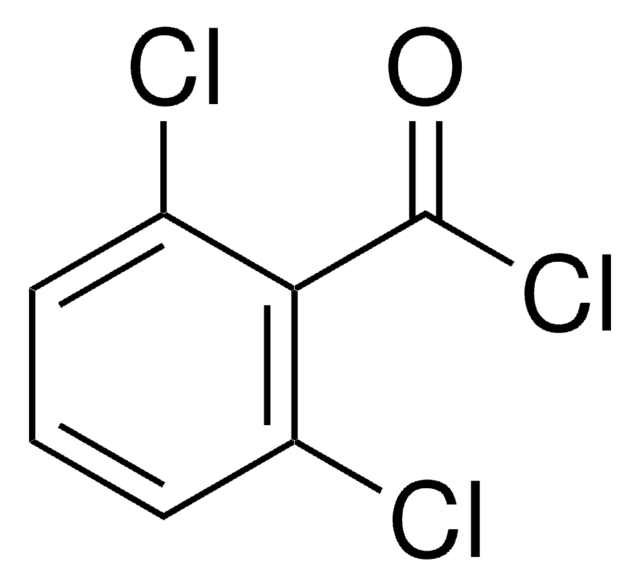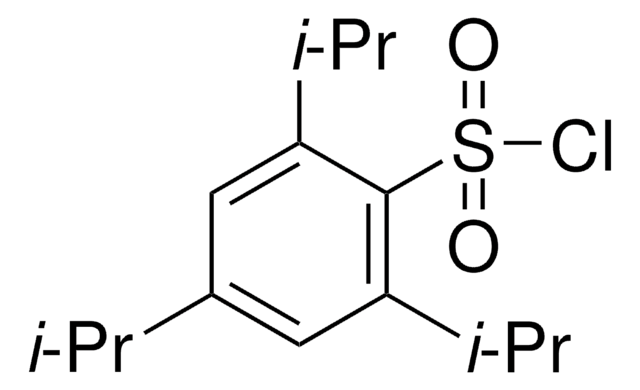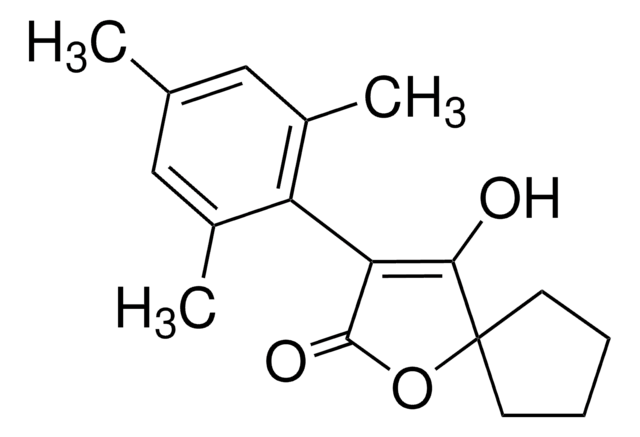344281
2,4,6-Trichlorobenzoic acid
About This Item
Produits recommandés
Pf
160-164 °C (lit.)
Groupe fonctionnel
carboxylic acid
chloro
Chaîne SMILES
OC(=O)c1c(Cl)cc(Cl)cc1Cl
InChI
1S/C7H3Cl3O2/c8-3-1-4(9)6(7(11)12)5(10)2-3/h1-2H,(H,11,12)
Clé InChI
RAFFVQBMVYYTQS-UHFFFAOYSA-N
Description générale
Application
- Active-sodium-promoted reductive cleavage of halogenated benzoic acids
- Synthesis of aryl aminopyrazole benzamides for use as non-steroidal selective glucocorticoid receptor agonists
- Flame retardant monomer synthesis
- Synthesis of 3,4,7-trisubstituted coumarins for use as antifungals
- Solid-phase synthesis of saphenamycin analogs with antimicrobial activity
Cocatalyst for cis-dihydroxylation and epoxidation of alkenes
Mention d'avertissement
Warning
Mentions de danger
Conseils de prudence
Classification des risques
Eye Irrit. 2 - Skin Irrit. 2 - STOT SE 3
Organes cibles
Respiratory system
Code de la classe de stockage
11 - Combustible Solids
Classe de danger pour l'eau (WGK)
WGK 3
Point d'éclair (°F)
Not applicable
Point d'éclair (°C)
Not applicable
Équipement de protection individuelle
dust mask type N95 (US), Eyeshields, Gloves
Faites votre choix parmi les versions les plus récentes :
Déjà en possession de ce produit ?
Retrouvez la documentation relative aux produits que vous avez récemment achetés dans la Bibliothèque de documents.
Active Filters
Notre équipe de scientifiques dispose d'une expérience dans tous les secteurs de la recherche, notamment en sciences de la vie, science des matériaux, synthèse chimique, chromatographie, analyse et dans de nombreux autres domaines..
Contacter notre Service technique